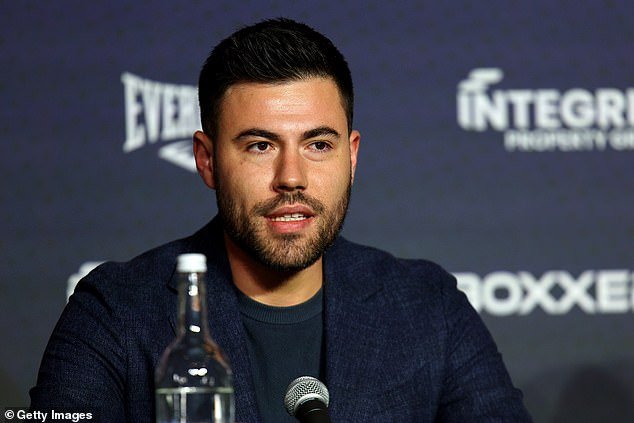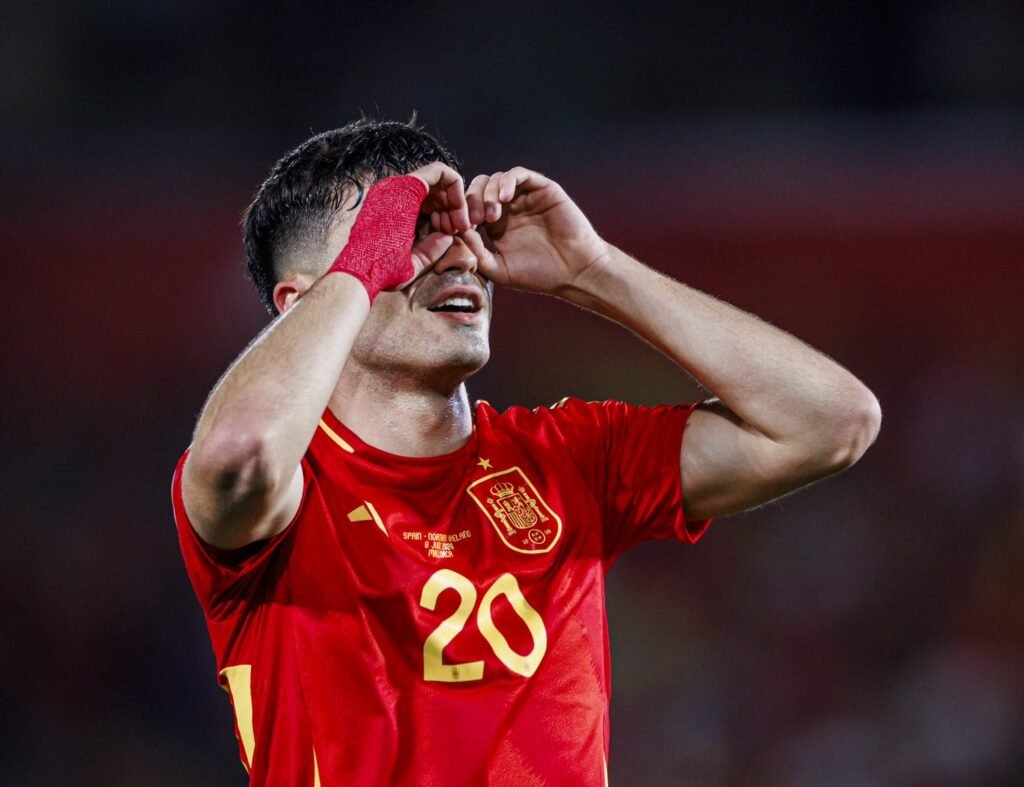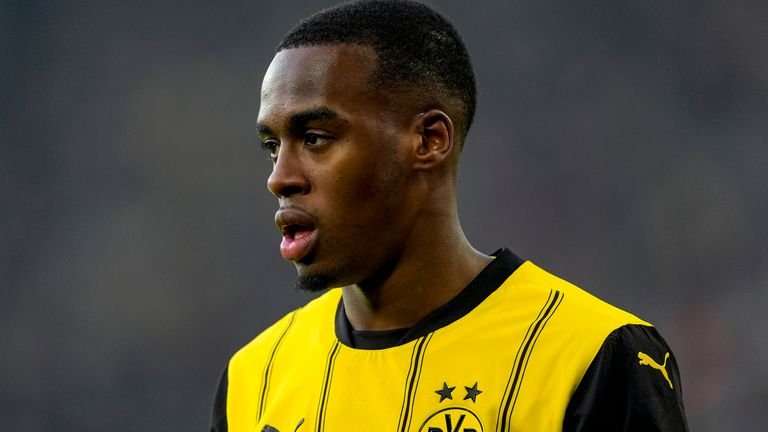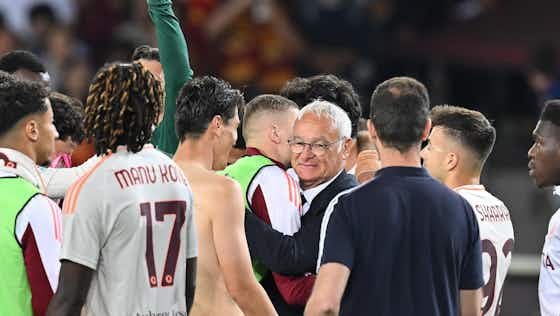Neil Saunders, the Premier League’s director of football, condenses 15 years of working in youth development into one point: “We know that every player pathway is different — there isn’t one right pathway.”
Four days apart, Eberechi Eze and Brennan Johnson proved his point.
Eze scored the winner in the FA Cup final for Crystal Palace, the first major trophy in their history.
Then Johnson tapped in Pape Sarr’s cross for the only goal in the Europa League final, ending Tottenham Hotspur’s 41-year wait for European silverware.
The respective professional careers of Eze and Johnson now look remarkably similar: aged 26 and 24 respectively, over 100 Premier League appearances each, scorers of goals for their national teams (England for Eze, Wales for Johnson) and now of winners in cup finals. Their pathways to get here, however, were not so similar.
Eze’s route was textbook non-linear: the London-born forward got released (or ‘deselected’, as those in youth development now say) four times in his academy days — by Arsenal, Fulham, Reading and Millwall — before finally settling at Queens Park Rangers. After a brief loan in League Two, the fourth tier of English football, at Wycombe Wanderers as a teenager, he had three progressively better seasons in the second-tier Championship with QPR before joining top-flight Palace in August 2020 in a deal worth around £20million ($27m at the current exchange rate).

Eze with the FA Cup in May (Glyn Kirk/AFP/Getty Images)
Johnson was at hometown club Forest from under-nines and moved up through the age groups. At 19, he helped Lincoln City to the League One play-offs in his only loan spell. The following season, he broke into Forest’s first team. They went on to win promotion via the play-offs, with Johnson being voted the Championship’s young player of the season. After one year in the Premier League, Tottenham paid £47.5million for him in the summer 2023 transfer window.
Saunders had some responsibility for both players’ development.
Being director of football for the Premier League means looking after everyone from under-nines through to under-21s, coaches and referees — “football development, as we term it,” he says.
He used to be on the other side of the game. His 10 years in the Watford academy stopped just short of a first-team appearance but he played a couple of seasons for Exeter City in the EFL’s lower divisions — and international futsal for England — before having to retire due to a knee injury at age 27.
In a private box at Wembley Stadium, he talked to The Athletic during a break at the annual Premier League Youth Development Conference. Over the two-day event, senior academy staff from all 92 clubs from England’s top four divisions meet, along with professional game stakeholders. Knowledge is shared and presentations are delivered on topics such as coaching, psychology and the experiences of players’ parents.
“Our responsibility is to provide clubs with many different options to support their needs,” Saunders says. His job title was academy programme manager when the elite player performance plan (EPPP) was introduced by the Premier League in 2012. It was the blueprint for a restructuring of the English academy system.
Saunders knows the “mission” of the EPPP word for word: “To develop more and better home-grown players, capable of performing at the highest level — the Premier League and the national team”. He can add FA Cup finals to that, with Eze last season and also the 2024 version, which was won by goals from two academy graduates — Manchester United’s Kobbie Mainoo and Alejandro Garnacho.
Then there is the photo of seven players from Chelsea’s Cobham-based youth setup posing together with the trophy after the 2020-21 Champions League final, when club-trained Mason Mount set up the goal in their 1-0 win against Manchester City. Mount was the first Englishman to get an assist in European club football’s biggest game for 13 years.
Made in Chelsea 💙🏆#UCL | #UCLfinal pic.twitter.com/6L0KFut5gy
— UEFA Champions League (@ChampionsLeague) May 30, 2021
“We needed to see a step change,” Saunders says of the landscape in 2012. “The EPPP was born out of a backdrop of a perception that English players — and players coming through our system — weren’t technically as advanced or tactically as astute as some of our European counterparts.”
It meant that, with the Premier League strengthening and foreign investment rising, its clubs increasingly recruited from abroad. The nadirs were England’s senior men’s side failing to qualify for the 2008 European Championship and the under-21s getting beaten 4-0 by their German counterparts in the age group’s Euro 2009 final.
Saunders says, “The EPPP gave us absolute clarity around what we were going after: more game time for young players in the Premier League and across the professional game; more contact (training) time; professionalising talent ID, recruitment, and the coaching workforce with age-appropriate qualifications; modernising academy structures; a significant spike in academy investment.”
How does he reflect on its success 13 years on? “Internationally, there is high recognition for the English academy system and the quality of academy players,” Saunders says. He reels off stats about 68 debuts by ‘homegrown’ players in the 2024-25 Premier League, when 18 of the 20 teams had a homegrown debutant. (‘Homegrown’ is defined as any player who was at a club for three years before they are 21 and later played for the first team.)
“It’s really, really positive. We’ve got over a third of the world’s top 250 players playing in the Premier League — and the bar keeps getting higher each year,” he says.
Over £2.5billion has been invested into academies now, benefiting from a four per cent levy “that gets ring-fenced to specifically invest in youth development. As transfer fees have increased, that’s created a really healthy fund”.
Saunders brings up the summer of 2017 — the first green shoots of recovery following adoption of the EPPP.
Three England age-group teams won tournaments in quick succession: the Under-17 and Under-20s World Cups, and the Under-19 Euros. Though what mattered to Saunders was not just those team triumphs but that Phil Foden (U17 World Cup), Mount (U19 Euros) and Dominic Solanke (U20 World Cup) were all voted player of the tournament.
“Our players as individuals were being recognised for their performances,” he says. “Suddenly, there was a narrative shift. We now (in 2017) have some of the best young players, but they need the chance to break through. The ultimate aim of academies is to develop players that are ready to transition into the first team. It’s not necessary to win age-group football.”
The real success was where England’s senior men finished at the four major tournaments from World Cup 2018 to Euro 2024: semi-finalists, runners-up, quarter-finalists, runners-up again. Of Gareth Southgate’s 26-man squad at the European Championship in Germany last summer, 19 had come through English academies following the EPPP’s implementation. Six of those played at multiple academies — Eze, Declan Rice, Ivan Toney, Aaron Ramsdale, Dean Henderson and Joe Gomez — while, across the whole squad, half had been out on loan at least once and nine of them multiple times.

England at Euro 2024 was a sign of the academy system’s success (Odd Andersen/AFP/Getty Images)
A research paper published at the end of 2024, which the Netherlands’ FA and its University of Groningen collaborated on, studied the pathways of 3,000 male and female Dutch footballers. They found “446 unique career development patterns,” with ‘deselections’ at international age-group teams (followed by reselections at higher ages) positively related to reaching the senior national side. Senior elite players actually had more atypical pathways than those who did not reach elite levels.
“Contrary to the widespread belief, elite players do not necessarily progress from early recruitment in a continuous, singular fashion,” the authors wrote. “The typical pathway to future soccer success can be characterised as atypical (and) nonlinear (…) these findings highlight the need for fluid and flexible pathways.”
Liam Delap is a perfect example.
He spent a decade in Derby County’s academy before joining Manchester City. There, he won an FA Youth Cup and league titles as both an under-18 and under-23 (twice). In 2020-21, he scored 24 times in 20 league starts under Enzo Marseca for the under-23s. It is a single-season Premier League 2 goals record which still stands.
“It was really special. I smashed it. It’s nice to know that someone’s not broken it,” says Delap at the Wembley event, ahead of collecting an award: Premier League academy graduate of the year (on-pitch achievements) for 2024-25.
That City team is one of the best ever assembled at academy level, featuring current European top-five league players — and multiple senior or under-21 internationals — in Delap, Cole Palmer, Romeo Lavia, Taylor Harwood-Bellis, James McAtee, Morgan Rogers, James Trafford and Felix Nmecha.
“It was so talented,” Delap says of that title-winning side. “You never know at that age what everyone’s going to go on to do, but it just showed how good we must have been because everyone’s flying at the moment.
“They’re all taking different paths but everyone’s doing well.”
Those paths are also converging slightly, with Delap reuniting with Palmer and Lavia this summer at Chelsea to be coached, at first-team level now, by Maresca again.
He had been on the fringes of Pep Guardiola’s first team in 2021-22 but Erling Haaland then arrived the next summer from Borussia Dortmund, so the ‘pathway’ to City’s No 9 shirt was blocked.
Championship loans with Stoke City, Preston North End and Hull City followed, before he made a permanent move to promoted Ipswich Town last summer. “To have those different experiences with different managers and different playing styles is really important for someone so young. It’s really helped me,” he says.
Delap acclimatised quickly to the Premier League in his full-debut season (he had made two substitute appearances for City, totalling 47 minutes of game time). He scored 12 of relegation-bound Ipswich’s 36 league goals, including two penalties, and earned a reputation for hard-hitting shots, a variety of finishes, and his physicality in duelling with defenders and ball-carrying over big distances.

“It’s different, stepping up (to the Premier League),” he says. “Everyone just gets stronger, more experienced and faster. You don’t get as many chances, and there is the relentlessness of game after game, being on it, and the competitiveness is higher.”
Delap is only the eighth Englishman aged 22 or younger to score 10+ goals in a Premier League season since 2018-19.
He cites Harry Kane — now England men’s captain and all-time top-scorer, who had four EFL loans in his teens before breaking through at Tottenham — as a role model; one he can now look forward to joining in the Champions League next season.
“The plan doesn’t stand still,” says Saunders. “You continue to evolve and improve. We’ve updated the EPPP so it continues to be fit for purpose going forward.” Some tweaks were small, such as changing Premier League 2 from an under-23s competition to under-21s, “really to reflect the age group of players that were playing in it”.
“We can move quite quickly from ‘The data and the feedback suggest this is a good idea’ (to) ‘Let’s move ahead and do it’,” he says, citing the Premier League International Cup. This was introduced as a 16-team tournament (eight Premier League sides and eight from continental Europe) in 2014-15 but a decade later has doubled in size.
The benefit is exposure, Saunders says: “Making sure that those young players, the first time they step on a Premier League pitch and face a German, a Spanish or a French player, they’ve had the experience of that through the pathways.”
The National League Cup was brought back last year for similar reasons. It is an equal split of Premier League 2 (under-21) and (fifth-tier) National League sides in a group-stage-then-knockouts format akin to the EFL Trophy, the latter a tournament in which the under-21 sides of some Category One clubs face first-teams from Leagues One and Two.

Peterborough United won this year’s EFL Trophy (Richard Pelham/Getty Images)
There are two areas where Saunders accepts that more progress can be made.
First, how clubs poach young talent from others, before players even turn professional, in cut-price deals, which he says will “always be a challenge to manage”.
Brexit has had an impact on that. Saunders says, “Previously, our clubs used to be able to recruit players from Europe from age 16. We (the Premier League) and the clubs felt that was a really positive addition. Maybe one or two in every age group of the best players from France or Portugal helped to make the best of our young players even better. That has been taken away, so naturally clubs’ recruitment pool has shrunk to look domestically.”
Compensation rules were increased a few years ago based on club feedback — even if the money involved is still just a decimal percentage of some first-team transfer fees — and contingent payments are in place, too. These are clauses, Saunders explains, that mean “if the player goes on to achieve certain milestones in the Premier League, or if he’s sold on for a transfer fee in the future, a percentage of that money comes back to the club that developed him”.
The other area where progress can be made is in recruitment.
The Athletic brings up the relative age effect, which is the overrepresentation of players born earlier in the (academic) year as scouts and coaches show bias or positively discriminate towards early developers — in England, that’s those born from September to November (Q1) birthdays, rather than summer babies (Q4: June to August).
Saunders rightly points out that it is “something that exists across all sports — academics have spent a lot of time looking into that”.
“Our clubs have a bias to Q1, Q2 (December to February). That still feels like a big opportunity for us to widen the talent pool even further,” he says. In its 10-year report on the EPPP in 2022, the Premier League said 45 per cent of academy players were Q1-born, four times the number from Q4.
The importance of this is that, at senior elite levels, there is an equal distribution of birth quartile (players born in all four quarters of the year are fairly evenly represented). That is because late developers catch up and those who stood out for early physical maturation sometimes lack top technical and tactical skills. For instance, Eze (June) and Garnacho (July) are Q4, and Mainoo (April) and Johnson (May) are Q3.
“We’re working with clubs to better understand it, and it’s complex, but at least acknowledging that the challenge exists (is a start) and then trying to find ways to mitigate that,” Saunders says.
One way is biobanding, grouping players based on physical maturity rather than date of birth (known as chronological age). This is done using X-rays of the left hand and wrist to determine ‘bone age’ and thus physical maturation.
That practice is slightly contentious — ie, the possibility that a pre-pubescent goalkeeper may not be recruited because of their predicted height — but is used on a good-faith principle because it is fundamentally part of the player-led approach. As Saunders says, it is about the “long run” in player development.
The Premier League also has a battery of fitness tests that players, from under-12 up, complete each season. They have data to benchmark physical averages for each chronological age-group position — and how that differs for a Category 1 academy player compared to Category 3.
“Suddenly you put him (a late physical developer) in an environment with boys that are of a similar physical stature and coaches get a really different perspective,” Saunders explains.
Saunders is passionate about the positive impact academies can — and mostly do — have on all players, rather than success or failure being based on whether they earn a professional contract or reach the Premier League. “There’s probably been an external perception that academies are great for those players that go through and play in the first teams, ‘But what about the sacrifices that other boys make?’ We’ve always promoted holistic development,” he says.
He is particularly proud of how education has improved under the EPPP (an often-overlooked part of its off-field work). “Young players are now achieving above the national average in GCSEs (exams UK schoolchildren sit around age 16), and we have more players going on to do A-levels than ever before. We’re working with universities to provide scholarships,” he says.
Tom Smith, a former Arsenal academy goalkeeper now at League Two club Colchester United, is a shining example of education balanced with a playing career. Now 23, Smith graduated last year with a first-class degree in economics and management from the London School of Economics.
Scholar of the Year: Myles Lewis-Skelly
Academy Graduate Award: Tom SmithThe duo were recognised at the recent Premier League Youth Development Awards 🏆
— Arsenal Academy (@ArsenalAcademy) May 21, 2025
That achievement earned him the off-pitch Academy Graduate of the Year Award for 2024-25 at the Wembley event, recognition of his personal development. Speaking of being deselected by Arsenal two summers ago, Smith says, “It came at the right time — I sort of knew it was coming.” It was certainly not the nadir many often assume it to be.
“The worst moment of my time at Arsenal?” he says. “Knowing that I wasn’t the smartest in the dressing room. Me and Bukayo (Saka, now a first-team star at the club and a full England international) used to have a competition on who was smarter. I remember sitting in the changing room when we all got our GCSE results at 16. We got (the) emails one by one, and he just beat me.”
Saka, too, has his own pathway, and is one of the poster boys for the EPPP and the academy system. Saunders points out that, in the Euros final against Spain last July, Saka was playing in a front four with Kane (the German Bundesliga’s 2023-24 top scorer), Jude Bellingham (2023-24 player of the year in Spain’s La Liga) and Phil Foden (who won the same honour in the Premier League that season): “All of them have in common that they’re English and they’ve come through our academy system — each of them taking ownership of their pathway.”
Saunders and pathways. He is wonderfully relentless, and, just once, lets himself revel in 15 years of success in developing the next generation.
“There was a time,” he recalls, “when people said, ‘We’re not tactically or technically at the level of our European counterparts’, to the point now where we say, ‘We’ve got so many amazing No 10s — how do we fit them into the national team?’”
(Top photos: Brennan Johnson, left, and Liam Delap; Getty Images)







